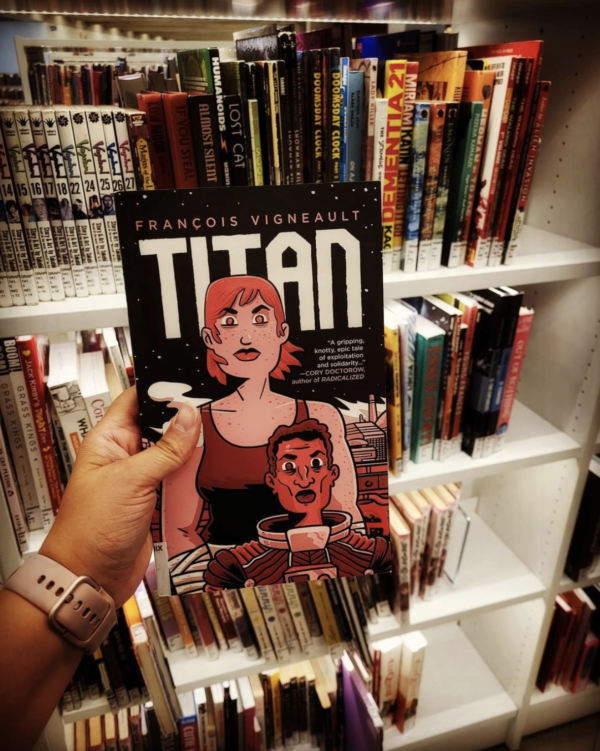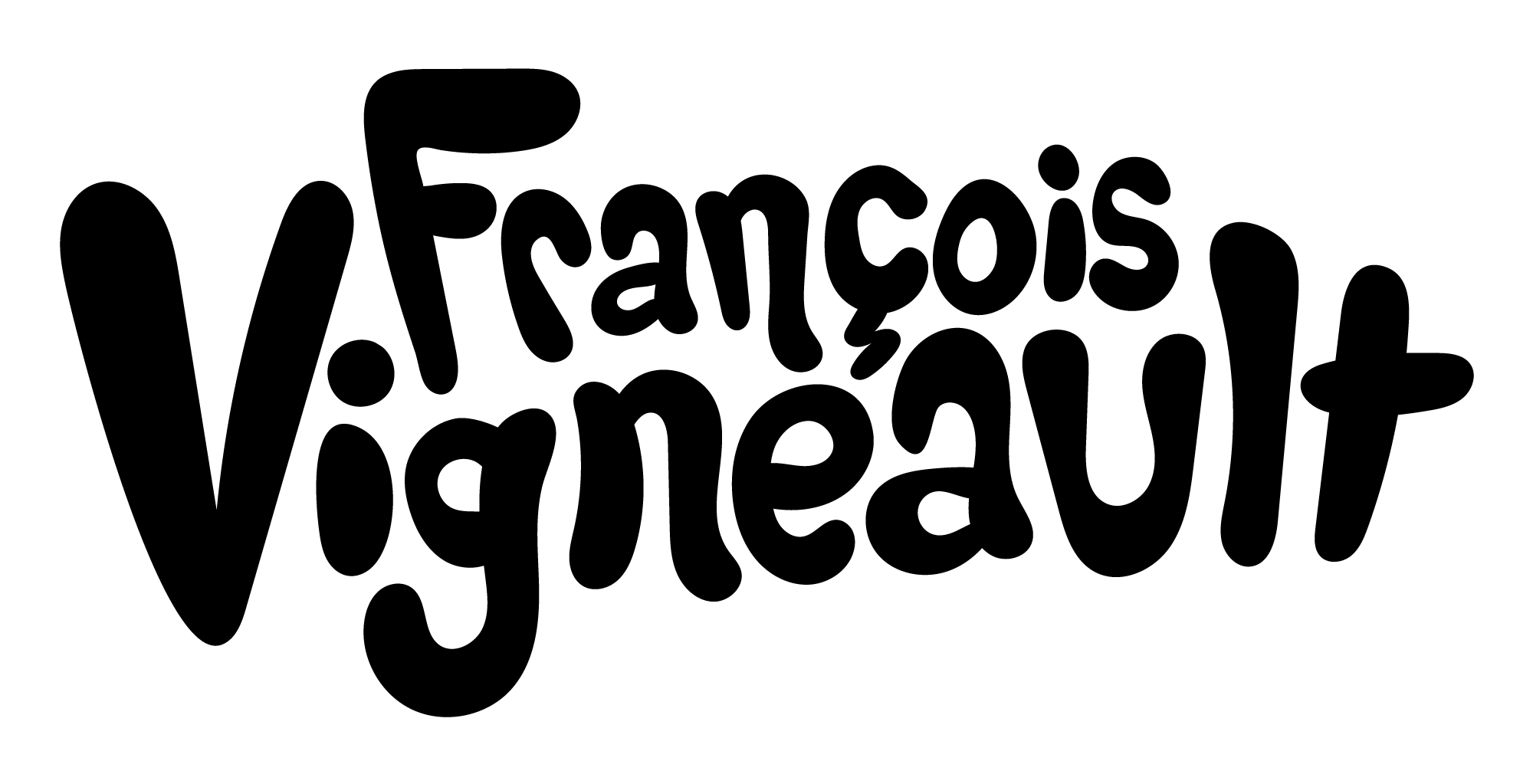“It is Literally My Job to Draw Comics” — An Unpublished Interview
A couple months back I did an interview with a local Montréal paper that was never published. I thought it was a shame it never saw the light of day (as always with my interviews I tried to spend a good chunk of time developing thoughtful answers to the questions, and the questions themselves were interesting), but that’s how things go sometimes! So I reckoned I’d share it here for those who might be interested.
Read on for some thoughts on the differences (and similarities) between Orcs in Space and TITAN, my improvisational creative process, working with Justin Roiland, my occasional frustrations with comic book shops, and more!
And don’t forget that Orcs in Space Volume Two comes out in April, so it is a great time to preorder the book now!
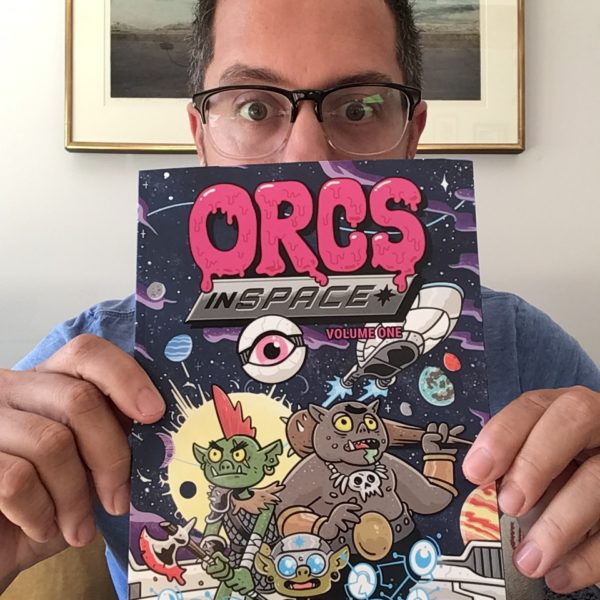
1) Where/how did the idea of Orcs in Space originate?
Orcs in Space was born in the minds of Rashad and Abed Gheith (or as I am trying to get them to be known, the #GheithBros). Inspired in roughly equal parts by online role playing games, Three Stooges reruns, and the cult classic British series Red Dwarf, the comic is a mash-up of the various pop-culture obsessions they had shared since childhood. The Bros collaborated with their long-time friend (and Rick and Morty co-creator) Justin Roiland to shape the concept (Justin’s contributions included the killer setup of the StarBLEEP crew losing their advanced starship the Aarken) and develop it as a series. Michael Tanner in turn was brought in to help shape the ideas and plot into a comic book, bringing with him a strong background in the medium (he is the author of two volumes of Junior Braves of the Apocalypse). Then finally me and our colorist DJ Chavis were brought in to bring the whole thing to life visually! In addition to drawing the comic I design all the characters and do the lettering. So it has been a long, multi-stage, collaborative process bringing the idea to life!
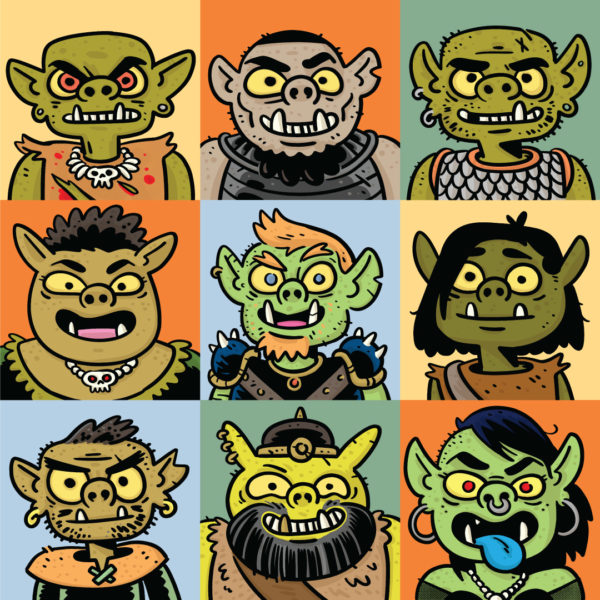
2) How does this work compare with your past work TITAN? What makes Orcs in Space different? And, alternatively, what aspects of it are similar, or continuations/improvements on previous themes?
It’s been so, so different… TITAN was a solo effort, I wrote and drew the whole book myself, so I’m 100% responsible for it, for better or worse! The jokey, slapstick atmosphere of Orcs in Space is also (pardon the pun) light years away from TITAN, which is a much, much more serious story, a “mature readers” look at past and present socio-political realities like class conflict and revolution through the lens of near-future science fiction. But all that said, in some ways both Orcs in Space and TITAN are loosely in the sci-fi genre and so I am drawing a lot of inspiration for both works from the book, films, and comics I have been slowly absorbing over the course of my lifetime… They share a lot of the same creative DNA as it were.

All my life, both as a creator and a consumer of culture, I’ve been into exploring a range of genres and types of stories… I’ve never been the kind of reader who only reads comic books, or science fiction, or classic literature, or what have you. I am often really interested in work that mixes and matches (some of my favorite authors and directors include Jaime Hernanadez, Jorge Luis Borges, Italo Calvino, Ursula K. Le Guin, and Steven Soderbergh), and I guess I have a sort of similar approach in my own artistic practice too… Pinging from socio-political sci-fi with TITAN to coming-of-age tale in 13e Avenue (written by Geneviève Pettersen, 2018, La Pastèque), to comedy-adventure with Orcs in Space. I like the variety.

3) What is your creative process like?
For collaborative projects like Orcs in Space or 13e Avenue, I am starting off very much as a film director might with a screenplay someone else has concocted, so I approach it with that in mind: How can I visually tell the story in a way that captures both the letter and the spirit of the story the writer(s) are telling, while also adding in my own creative energy so that the final product is (hopefully) greater than the sum of its parts? I rough things out very quickly as a rule, my “thumbnails” and “pencils” are all one single stage, and they tend to be very loose gestural sketches, with very little detail… Mostly just blocking out the characters and dialogue, seeing what fits on a given page or in a particular chapter.
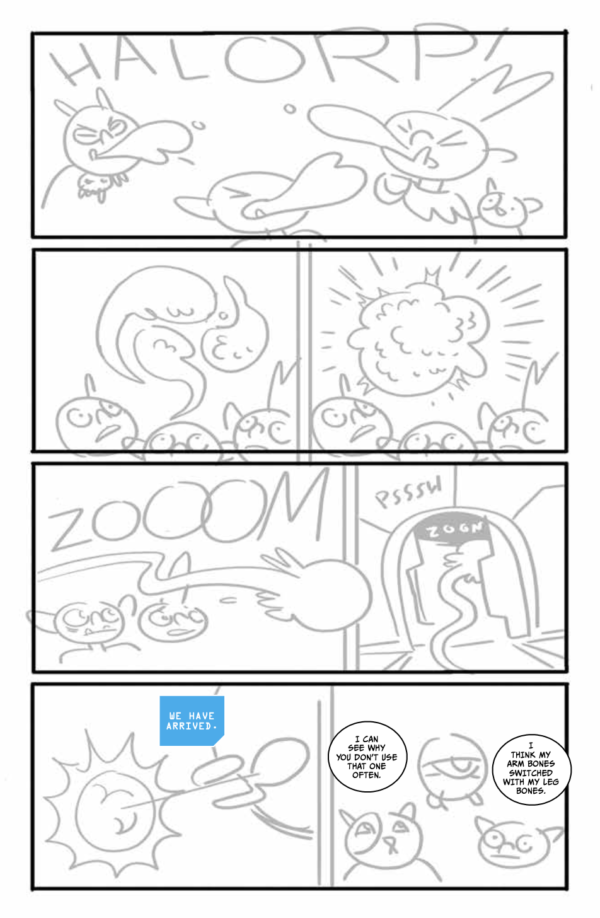
All of the final drawing is done directly in “ink.” I use these older analog terms because that is what I grew up with, but in fact for the last five years or so I have worked exclusively digitally (I draw on a simple, inexpensive Wacom tablet and use Photoshop). This means both that the drawings can have a kind of fun, improvisational and loose quality to them, but unfortunately it also means that sometimes I go down the wrong path and will have to redraw complete panels or pages… But I think the rapidity and spontaneity I get makes it worthwhile.
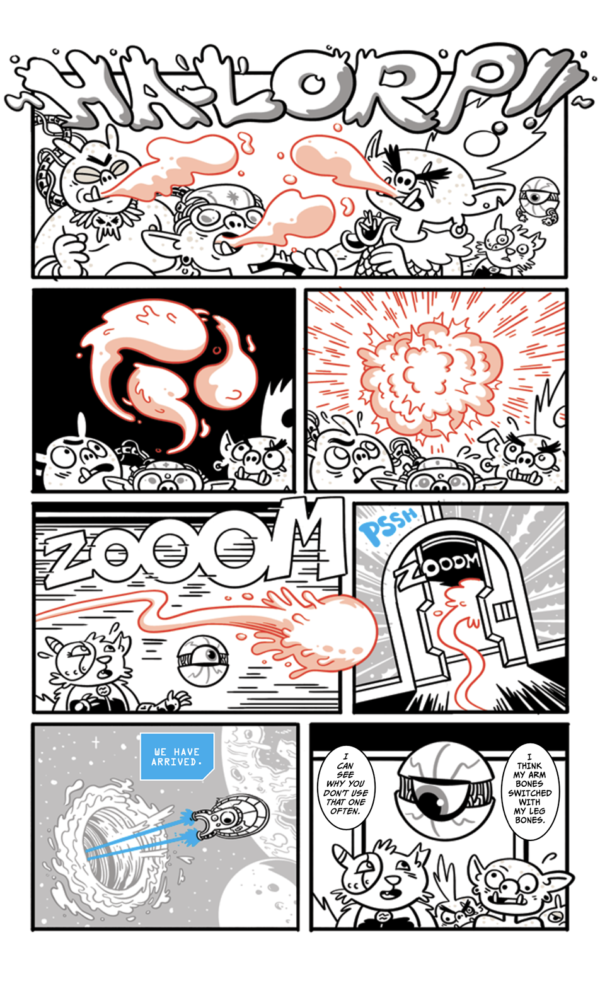
When I am writing the project as well, like with TITAN, I have to say the whole thing is much more complicated and even frustrating… I enjoy writing and telling my own stories my own way, but it can be daunting to face the blank page. Many of my writing projects will gestate in my mind and on the pages of various notebooks for quite a few years before I have a breakthrough and begin working on them in earnest… That was the case with TITAN and it’s the same story with my upcoming graphic novel, Blue Moon, both came from concepts I had maybe 20 years ago! While I am slowly working things out, I just try to keep myself thinking about the characters, the world, and the plot whenever and wherever I can (one trick I have is I try to think about the story as I am falling asleep). I ask myself questions: Where is the protagonist coming from, be it physically, emotionally, or intellectually? What can character X say to character Y to push this scene forward? Is there anything in my personal experience I can bring to this scene to add something unique here? Can I bring an element from earlier in the story back near the end to make a connection? By sort of allowing myself to wander mentally in the story space I can often find some interesting links and surprise myself. I am definitely an improvisational creator rather than a careful planner.
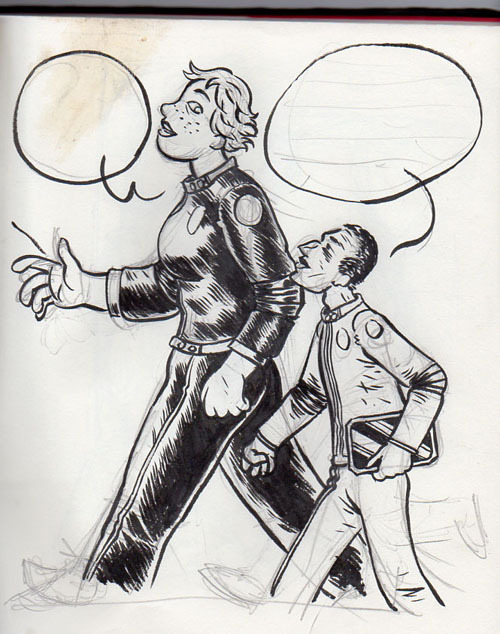
4) What was it like working with Justin Roiland?
For most of the project it has been pretty hands off I have to say! One of the quirks about Orcs in Space is that much of the writing for the first story arc was completed before I came on board the project as the artist, and then when we finally got started on it in earnest, Covid-19 hit, and Justin and the other writers are off in Los Angeles, so my contact with everyone was really limited for much of the project. I’ve still never gotten a chance to hang out with the guys in person! Hopefully next year, things will calm down and we’ll finally be able to do some appearances at comic conventions together and just have fun. Recently we have all had the chance to chat and communicate more, discussing some of the details in the upcoming Volumes Two and Three, and that has been a lot of fun, I think the collaboration with all the writers has been getting more free-flowing and that definitely adds to the fun for me. Justin in particular has been a sort of guiding light for the entire creative team, he has really helped finesse and streamline the fun and funky ideas Rashad and Abed were bringing to the table, and punching up the narrative so that things just work better… I think you can really feel his influence throughout the book. On the art side, there was also naturally a desire that my work on the book reflect some of Justin’s unique visual style, but I was also always allowed to really be myself too, there was never a question of trying to duplicate the look of Rick and Morty for instance.

5) What has the feedback/reception been like so far, after the graphic novel’s release on Oct 6?
It’s been really fantastic so far! We’ve gotten some excellent, thoughtful reviews (some people can’t bear to read their notices, but personally I read ALL the reviews of my work, including reader reviews, good and not-so-good, and I always get something constructive out of it). Lisa Gullickson at Comics Bookcase gave Volume One a frankly glowing review and brought out a ton of interesting subtext in the book, that definitely made my week. But I also really appreciated Matt Baume’s review in The Stranger, which was much more mixed, pointing out both the things he really liked and the areas he thought we could do better. That kind of feedback makes me want to keep “leveling up” as we go forward, and really bring my A-game in future volumes. I have the feeling that Orcs in Space is still a little bit “under the radar” so I am definitely looking forward to the word getting out, more people finding out about the book, and building a fanbase for it.
6) Were there any challenges in creating the book? Setbacks?
It’s definitely been a major challenge to bring out this new series in the midst of a global pandemic! Not only did that entail delaying the release of Orcs in Space (the series started coming out a year later than initially expected!), but also so many of the tools we would normally use to promote the release, like appearances at comic conventions or in-store signings, just haven’t been available to us. But I am very happy to say that things seem to slowly be getting better, and I have been doing a few signings locally. And, fingers crossed, we can hope for a more “normal” year in 2022 and that we will be able to do additional promotion for Volume Two (out in April) and Volume Three (out in October of 2022). Dare to dream!

7) Where do you hope to go from here? With the second volume releasing in February, any longer-term goals/aspirations, or is this your main focus?
I just finished the art for Volume Two the other day, and I will be diving into Volume Three in about a week, so Orcs in Space is still definitely the main focus of my creative workday for the upcoming months! But I am also trying to fit in more personal work, most notably my next solo graphic novel, a sci-fi thriller titled Blue Moon. That book is much more in line with TITAN, and I am really excited to find the time to really dig into the creation of that more and more in the coming months. TITAN took me nearly five years to write and draw, and I am hoping that the process will be much faster with Blue Moon, so with any luck I will be done in 2022 or 2023. The real struggle is to find the time and energy to juggle multiple projects at the same time, but I do think I am getting better at it with time. Beyond that, I just hope I can continue to create work that is interesting and connects with an audience. I’d love it if I could continue to both draw other writer’s stories as well as create my own narratives, I feel like the two modes engage different parts of my brain, and I like that. I definitely don’t take it for granted that I’ll always be doing comics as a full-time job, so I also just try to enjoy it while I can… It’s incredible to me that I am literally doing what I dreamt of as a kid.
8) About you personally—How did you become a cartoonist living in Montreal?
I moved to Montreal six years ago. Long story short, I grew up in the United States, but both my parents were immigrants, my father from Haiti and my mother from Quebec. I had always been frustrated that I had lost the ability to speak French when I was a child and had tried to get it back with mixed results, so when I had a chance to take a summer off to work on my comics back in 2015, I decided to spend three months here in Montreal. I fell in love (both with the city and with a particular human being!) and moved here permanently! And my French is much improved, I am happy to say.
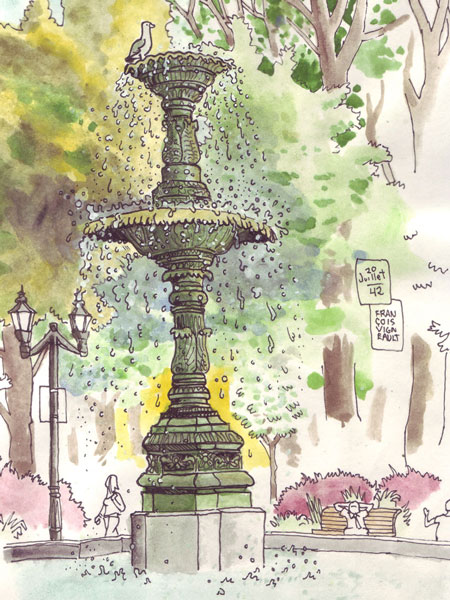
I was really lucky to find an eager audience for my work here, my book TITAN (which came out first in French from Éditions Pow Pow in 2017) was nominated for six prizes, and 13e Avenue won a few awards, including the Prix des Libraires. The comics community here has really welcomed me, and I know I wouldn’t have the same career in comics I have now without the support of the creators, publishers, booksellers, and readers of Montreal. I try to give back in whatever ways I can, for instance I have been volunteering with the Montreal Comic Arts Festival almost since I arrived in the city. There is such a rich comics community here.
9) What are your favorite, and maybe least favorite, parts of the discipline/craft?
My favorite element of comics as a medium is that it is really approachable, both for the creator and the reader. In some ways I am convinced that most people just “get” the basics of storytelling in the medium, you give a kid a comic and they can basically read it right out the gate. Now that we have an increasingly broad range of subject matter and ever-more diverse group of authors creating comics, I think that the horizons for the artform are really expanding. If you go into a bookseller like Librairie Drawn & Quarterly or Librairie Z, I guarantee that you can find a graphic novel that you will love, or a perfect indie comic for someone in your life.
One of my least favorite things about comics is probably in some ways the reverse, it’s that there are some entrenched elements determined to keep comics just the way that they were in the past. Happily, it’s not so much of an issue here (Quebec has a much more mixed comics culture), but I have been into comic shops in the USA that feel completely stuck in the 1990s, totally focused on the superhero genre and seemingly actively unwelcoming to readers who don’t fit into the traditional (male, adult, heterosexual, and nerdy) market for comic books. You also see it online, where fans complain venomously about “social agendas” if a creator dares to mess with one of their favorite characters. I grew up in the old-school comics culture, so in some ways I get it, people think that the work they grew up on and love is getting shoved aside and forgotten about. But that’s not true, personally I think there will always be space for the old-school stuff. I think there is a real responsibility on the part of everyone in the comics industry (shop owners, publishers, creators, festival organizers, readers, etc) to welcome in new readers and creators and stories that reflect the broader world. There is room for everyone in comics!
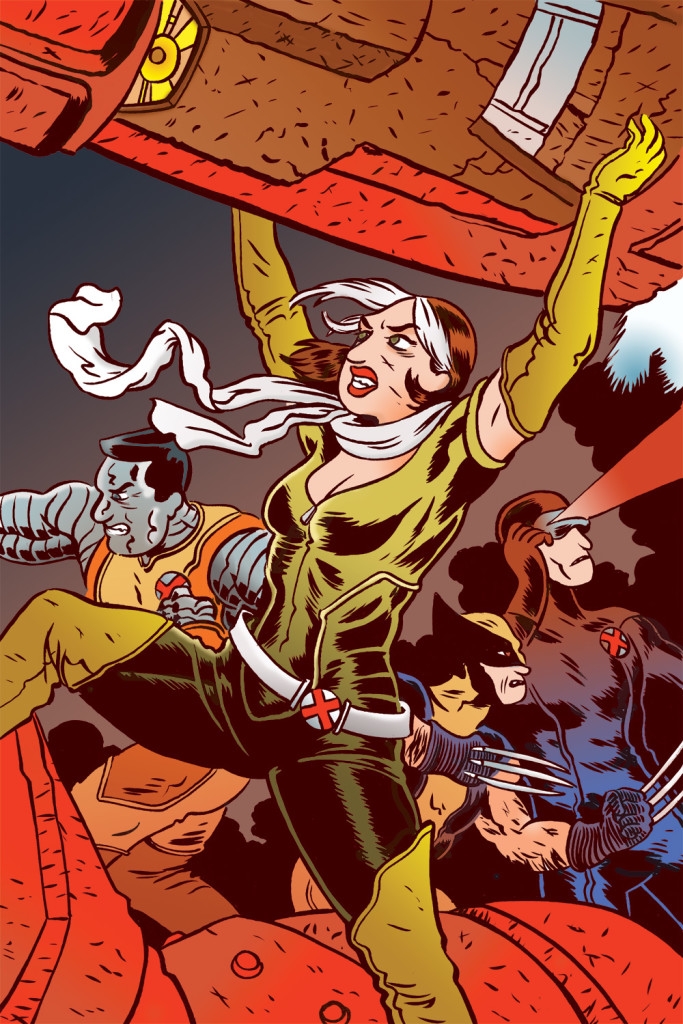
10) And, lastly, my favorite question to ask artists: Why do you like being a cartoonist?
When I was getting into comics as a teen, waaaay back in the 1990s, it was my dream to be a comic book artist. Now, every time I see my name on a comic I am struck by just how lucky I am to be doing what I do for a living, it is literally my job to draw comics. For many years I didn’t think that was going to be the case, and I was 100% fine with that, I have had a bunch of other fulfilling jobs over my lifetime. Furthermore I know that I might not always be a full-time comic book creator, in a few years I might find myself back working in an office, or a store, or whatever, and I am okay with that, too. But for now I just try to remind myself that I am doing just what I wanted to do, and that is amazing.
